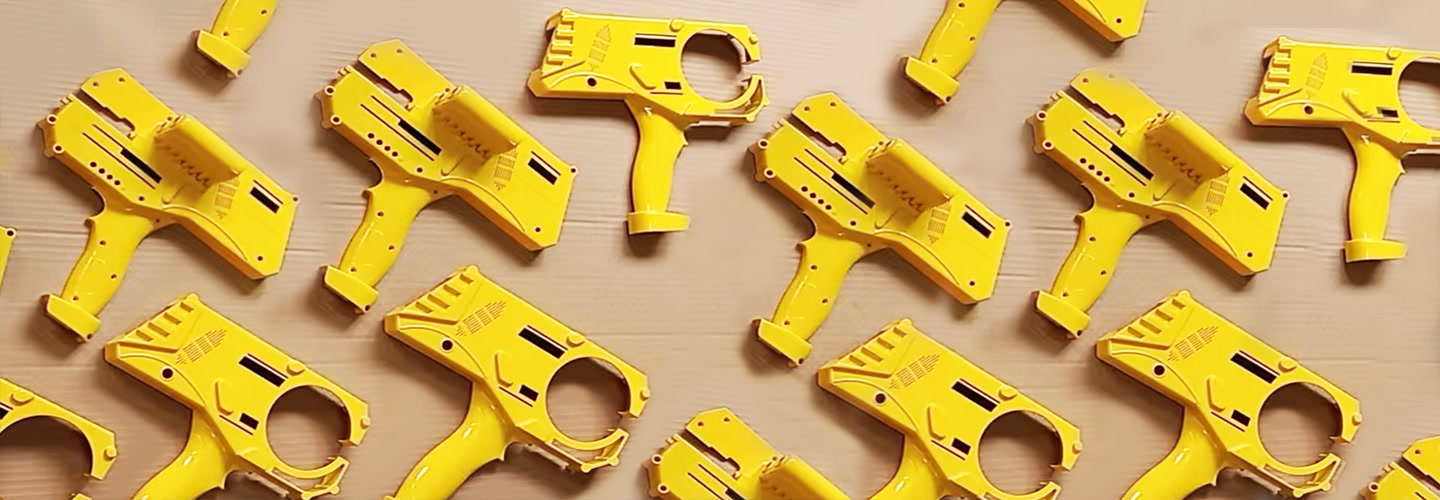
Vacuum casting, also known as polyurethane casting, is a cost-effective method for creating high-quality parts during the prototyping phase or for small-batch production. Below, we explore its applications, design tips, material options, and demonstrate how our company can support your business needs.
What is Vacuum Casting?
Vacuum casting involves pouring liquid polyurethane resin into silicone molds under vacuum conditions to create detailed replicas with excellent surface finishes. Unlike traditional injection molding, which requires expensive metal molds, vacuum casting uses flexible silicone molds, making it perfect for smaller production runs.
The process starts by creating a master model, typically made using 3D printing or CNC machining. The master model is then encased in liquid silicone, forming a mold that cures overnight. Once cured, the mold is carefully cut open, leaving behind a cavity ready for casting.
How Does Vacuum Casting Work?
Master Model Creation
The master model acts as the blueprint for the final product. It can be created using 3D printing or CNC machining. Ensure the model is strong enough to withstand the molding process.
Mold Making
Liquid silicone is poured around the master model inside a casting box. After curing, the mold is carefully opened, leaving behind a cavity that mirrors the shape of the original part.
Casting Process
Polyurethane resin is poured into the silicone mold and placed in a vacuum chamber to remove air bubbles. The mold is left to cure, and the finished part is removed once hardened. Each silicone mold can produce about 25–50 parts before losing accuracy. For larger quantities, additional molds can be created from the same master model.
Applications of Vacuum Casting
Vacuum casting is widely used across various industries due to its ability to quickly and affordably produce high-quality parts. Some common applications include:
Consumer Electronics: Enclosures, control panels, and user interfaces.
Home Appliances: Handles, knobs, and decorative components.
Automotive Industry: Dashboards, buttons, badges, and lighting lenses.
Art and Collectibles: Statues, scale models, and props for film and theater. This versatility makes vacuum casting ideal for both functional prototypes and end-use products.
Design Considerations
To achieve the best results, consider the following design tips:
Wall Thickness: Avoid walls thinner than 1mm to prevent structural issues.
Undercuts and Draft Angles: Add draft angles (3–5 degrees) to simplify demolding.
Material Selection: Choose materials based on flexibility, strength, and transparency.
Keep in mind that certain features, such as sharp corners or fine text, may lose definition during cooling.
Material Options
Vacuum casting supports a variety of material properties, including:
Rigid Materials: Ideal for structural components.
Flexible Materials: Perfect for seals or soft-touch parts.
Transparent Materials: Suitable for optical or decorative purposes.
Modern polyurethane materials are not only versatile but also environmentally friendly, supporting with sustainability goals.
Cost Efficiency and Sustainability
Compared to traditional injection molding, vacuum casting offers significant cost savings. With lead times of just 10 days from design to delivery, it's perfect for bridge production or market testing. Additionally, many polyurethane materials are recyclable, promoting eco-friendly manufacturing practices.
Client Case Study
Case 1: Automotive Lighting Lens
An automotive supplier partnered with us to develop lightweight lens covers for interior lighting systems. By optimizing the design and selecting a transparent polyurethane material, we helped them achieve a 20% reduction in material usage while maintaining optical clarity and durability. The project was delivered on time and met all performance standards.
Case 2: Consumer Goods Decorative Components
A consumer goods company required custom decorative components for their new line of personal care products. Using vacuum casting, we produced parts with intricate details and high gloss finishes. The entire process, from design refinement to delivery, was completed within three weeks, exceeding the client's expectations.
Conclusion
Vacuum casting offers a cost-effective and flexible solution for producing high-quality parts, whether you need prototypes or small-batch production. Our company helps bring your ideas to life efficiently and sustainably, ensuring exceptional quality and alignment with modern manufacturing goals. By leveraging this technology, you can reduce costs, streamline production, and meet sustainability targets without compromising on performance.
